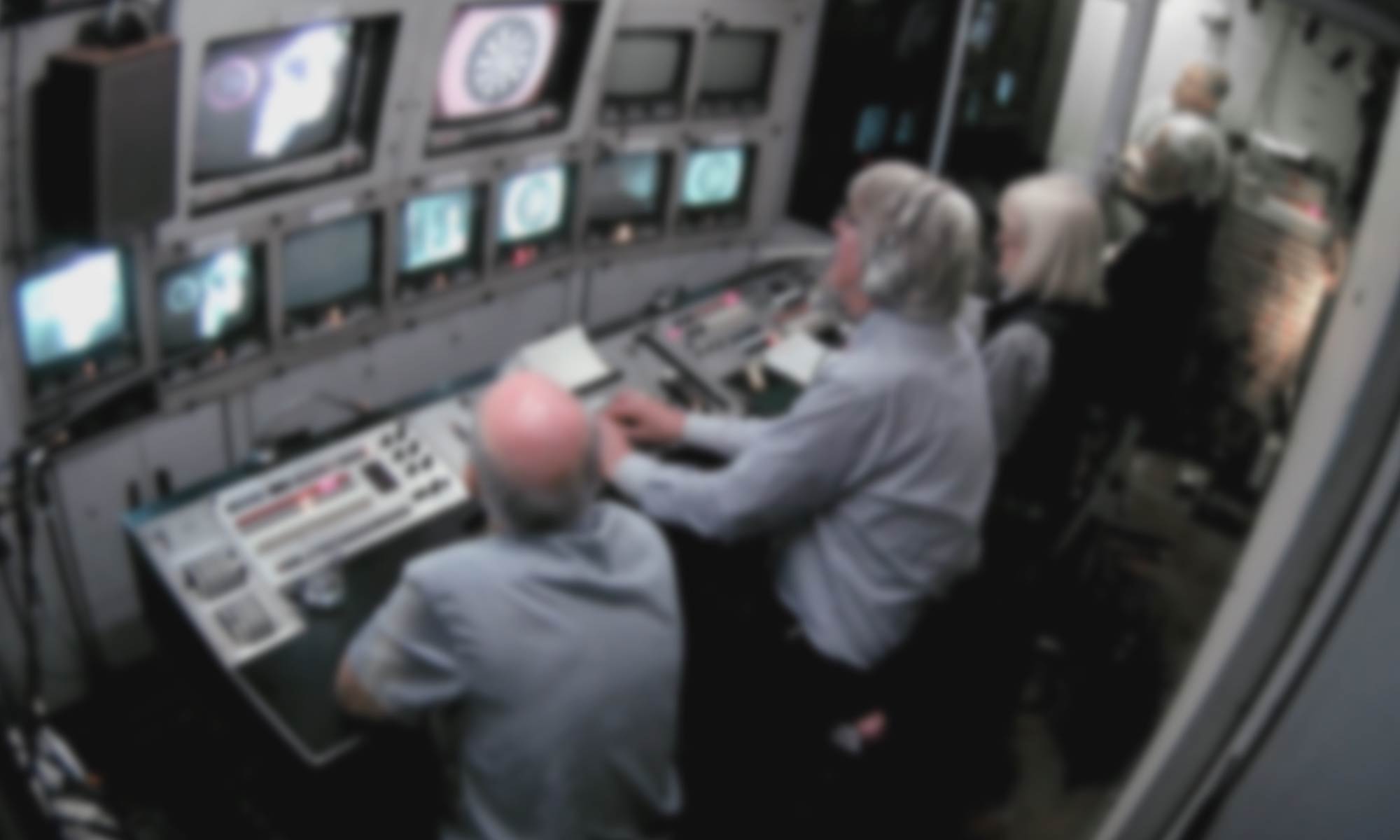In May, the ADAPT project filmed its first full-scale simulation: an historical re-enactment experiment designed to reunite television film production veterans with old equipment, in order to better understand how television was made in the past.
We assembled a team of retired television production professionals, all of whom – at one stage in their career – had worked from the BBC’s Television Film Studios in Ealing. With the help of equipment collector and camera operator John Adderley, we borrowed hundreds of kilograms of cameras and sound recording equipment, along with all the lighting and cables necessary to recreate the technological conditions of 1960s television film production.
Amanda Murphy, who produced the event, wrote in detail about this experiment on this website a few weeks ago:
I blink in disbelief at having pulled this off…as near 90 year old Ray Sutcliffe (once editor of BBC flagship series, Chronicle) David Whitson cameraman (and DOP) looking boyish still in retirement (made Man Alive and series like The Voyage of Charles Darwin ) John Adderley acting as camera assistant (Tribal Eye, Man Alive) Alex Branson PA, Bill Chesneau on sound, John Hooper as sound assistant and Alan Muhley electrician, all walked into shot carrying the Éclair camera, magazines for loading film, a Nagra 3 sound recorder and an old DK25 boom, a hefty wooden camera tripod and various redheads and blonde lights from the era, it felt a bit like a Fellini film! The combined age of the crew was likely somewhere around 600 yet this seasoned crew from the 60’s and 70’s worked together like they’d just made a telly programme yesterday!
Now we face a challenge almost as substantial as bringing together this team and providing them with working examples of obsolete equipment. As Amanda noted last month:
Now for one of the biggest challenges of the project- making sense of and editing the footage! […] For ADAPT I’ve got to wade through 1TB of material… that’s around 15 hours of footage with seven people often talking all over each other, sometimes demonstrating sometimes ‘presenting’ to an imaginary audience, sometimes getting on with filming, sometimes explaining it, often using old familiar jargon, often walking off camera or asking for a chair or standing listening to others.
We have now started to make sense of all that footage, and we have begun to assemble it into sequences which we hope will be of use to historians of film and television. We’re pleased to be able to start releasing rush edits of some of the footage we shot back in May. These take two forms. Firstly, we are ready to share three bite-sized portions of the main filming event. These give a flavour of what we asked our veteran crew to do, and how they responded to our challenge.
In the first of these videos, you’ll see the crew preparing their equipment: loading film magazines, checking the focus of lenses, and synchronising sound recording equipment.
In the second clip, you’ll see what happens in the few minutes before their filming begins and after the “cut” is called. We asked our crew to film a short interview with our principal investigator, Prof. John Ellis. In this clip, we see the crew explain to John how they intend to film him, and make final preparations to roll the film and record sound. After the interview itself – which is not shown in this clip – the crew confer with each other in order to establish whether the various technologies operated correctly, and whether further shots need to be taken.
The third and final clip from the simulation shoot shows our crew filming in a different environment: outdoors, on the grounds of Royal Holloway, University of London. What we didn’t tell our crew in advance was just how tricky that would be: we positioned them next to a busy road and underneath Heathrow’s departure flightpath. Asking the crew to carry out an interview while motorbikes roared past and jets buzzed overhead was as close as we could get to recreating the conditions of a busy city.
In addition to these clips, we have also uploaded a ten-part playlist of clips from a filming session we carried out with lighting cameraman David Whitson and electrician (i.e. lighting expert) Alan Muhley. Our approach here was different: rather than ask David and Alan to use the old equipment, we simply filmed them handling it, while talking about their memories of using different types of lighting equipment. This is the first of several such ‘reunions’ between people and technologies: we will soon release similar playlists which document our participants’ memories of sound recording equipment and 16mm film cameras.
These clips are not fully contextualised yet. They are the rough, raw, products of our historical research. They are data, not findings. In time, we’ll be working on edited packages of material which will explain in detail how technologies and people worked together. Finally, we intend to release – to the fullest practical extent – our rushes, under a minimally restrictive Creative Commons licence, so that anyone can build upon, remix, and contest, the results of our research.
Nick Hall is a research officer in the Department of Media Arts at Royal Holloway, University of London.
